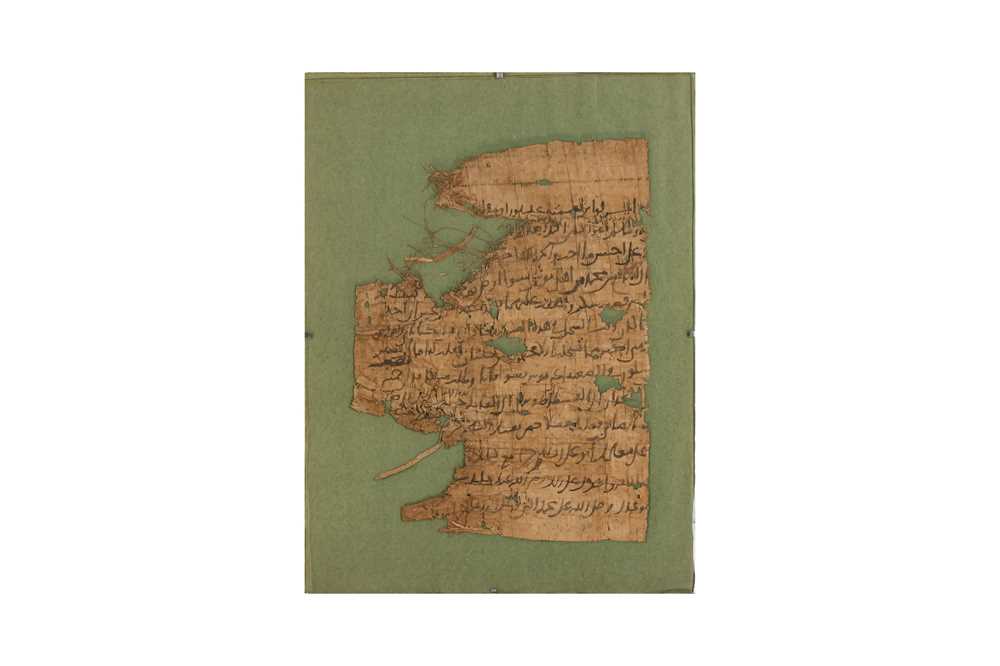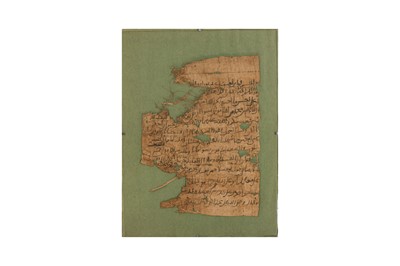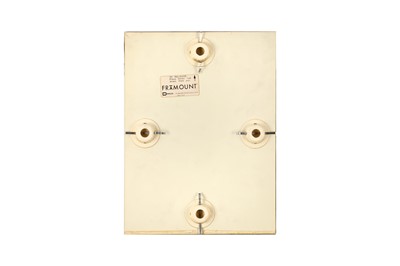28th Apr, 2023 14:00
Islamic & Indian Art
A FUSTAT PAPYRUS DOCUMENT FRAGMENT
Egypt, 8th - 9th century
A FUSTAT PAPYRUS DOCUMENT FRAGMENT
Egypt, 8th - 9th century
Arabic manuscript on Egyptian papyrus, 13ll. of black ink proto-naskh script to the page, with a direct mention of the city of Fustat (5l. from the bottom), and prayers and auspicious blessings in the final line, the 'Alif perpendicular to the text line and extending below the connecting stroke in its final form, dal clearly distinguished from ra’, loops kept open, absence of consonantal diacritics, dots in diagonal format, no evidence of illumination, mounted, glazed and framed, the folio 23.3cm x 17cm, 30.5cm x 23cm including the frame.
In the late 19th and early 20th centuries, a large group of papyrus documents was discovered, mostly made in Upper Egypt and dating from the first few centuries of Islamic history. Although mostly fragmentary, several of these documents managed to survive thanks to the properties of the Egyptian soil, long known for its enhanced ability to preserve organic matter. The choice of papyrus over vellum is also significant in helping us to discern the nature of the documents; at the time, parchment was a very expensive material while papyrus was readily available. This suggests most of these documents must have been connected to everyday practices, acting as letters, deeds, and even bills. However, in the 9th century, the introduction of paper in Egypt led to a progressive decrease in the popularity of papyrus, and by the middle of the 10th century, the manufacture of this truly autochthonous material had completely ceased (Geoffrey Khan, Bills, Letters and Deeds, The Khalili Collection of Islamic Art, 1993, p. 11). Despite their fragmentary nature and their hard legibility, these papyrus fragments offer a fascinating insight into the early stages and developments of not only Arabic scripts but also Arab history.
Our fragment presents striking analogies with an account in the Khalili Collection of Islamic Art, inv. no. PPS225, attributed to 9th-century Fustat (illustrated ibidem, p. 47, cat. 15). The script was carefully executed on both documents: the loops are open, and the dal is clearly distinguished from ra’. Another 9th-century document in the same collection (inv. no. PPS236) is of great interest here because it has a direct mention of the city of Fustat, like the present lot. The script of the verso is also analogous. The text provides instructions to deliver ‘this bundle’ of documents or books to the house of Abu 'Uthman Muhammad ibn Bakr ibn Muhammad al-Basri in the Suq Barbar district of Fustat, leading us to wonder if the content of our fragment could be of similar nature.
Sold for £2,750
Includes Buyer's Premium
Do you have an item similar to the item above? If so please click the link below to submit a free online valuation request through our website.


